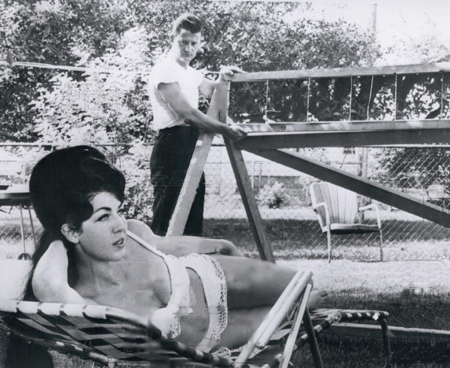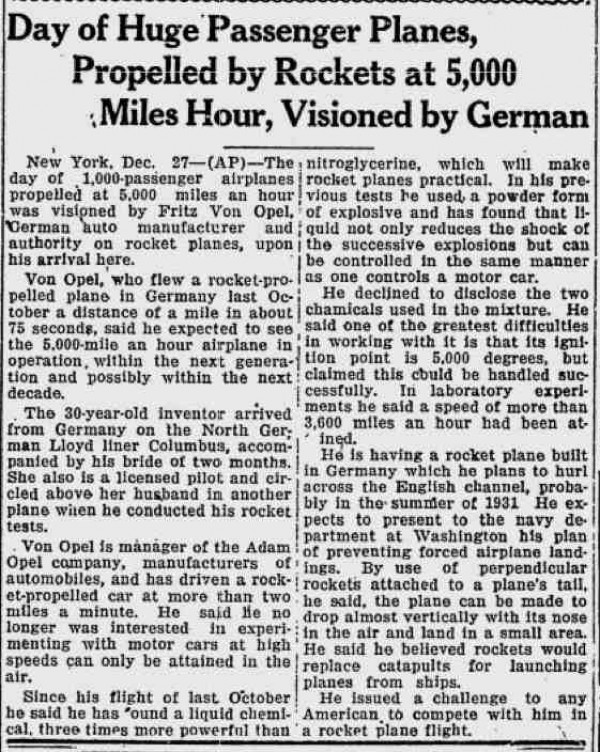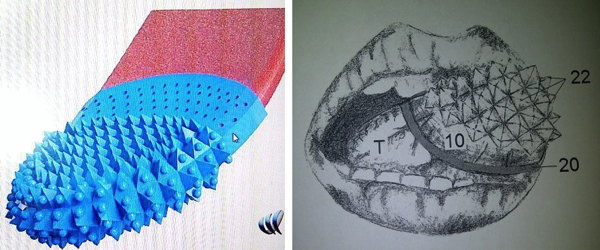Inventions
The Mirror Tanner
Invented in 1965 by William Wilson of Wyandotte, Michigan who claimed that his mirrors filtered out "sunburn radiation" leaving only "tanning radiation" and therefore gave a "blisterless, heatless, burnless, lotionless suntan." He's keeping a close eye here on the subject of one of his tanning experiments.
Posted By: Alex - Mon Jul 15, 2013 -
Comments (5)
Category: Inventions, 1960s
How to streamline your RV
A gas-saving concept from 1979:
Posted By: Alex - Mon Jul 08, 2013 -
Comments (4)
Category: Inventions, 1970s
Stop! Have you washed your hands?
Andrew Thomson is hoping to raise £25,000 to bring his "STOP 'h' AND WASH" invention to market, but so far he's only got £79.
Posted By: Alex - Thu Jul 04, 2013 -
Comments (1)
Category: Inventions
Flying Bike
More info here.
Posted By: Paul - Fri Jun 14, 2013 -
Comments (5)
Category: Bicycles and Other Human-powered Vehicles, Flight, Inventions, Europe
Self-Lighting, Dimmable Candle
Candles go high tech!Switch Candle from Zelf Koelman on Vimeo.
Posted By: Alex - Fri May 17, 2013 -
Comments (11)
Category: Inventions
Universal Translator Already Here
It doesn't have Klingon yet, but this demonstration shows the technology exists to make your own Universal Translator, ala Star Trek.I barely understand all the pieces used in the assembly, much less how it is done.
A version for all of us could be just around the corner.
What language would you want translated?
Posted By: gdanea - Wed Apr 24, 2013 -
Comments (9)
Category: Inventions
The Lice-Anator
It's good to see that the spirit of invention is alive and well among the nation's youth, as evidenced by the "Lice-Anator," the winning invention of this year's Toshiba/National Science Teachers Association ExploraVision program. The invention (or rather, sketch of an invention... no working prototype was required) was submitted by first graders Maggie Huerta, Mackenzie Greco, and Nina Kaiser. The gadget is "a computerized hairbrush that uses special bristles and processors that not only detect the presence of the creepy crawlers [lice], but also kills them with tiny on-board lasers." Cool! [chicagoparent.com]
Posted By: Alex - Sun Mar 31, 2013 -
Comments (6)
Category: Inventions, Children
Fritz von Opel
Fritz von Opel was one of those early-20th-century rocket-besotted guys who pioneered this exotic means of propulsion. Just look at his rocket car go in the film clip above! (Narration in German, but not necessary to comprehension.)
But von Opel's innocent excitement had its darker side. I give you the 1929 newspaper article below. Specifically, the enlarged sentence.


Posted By: Paul - Fri Mar 29, 2013 -
Comments (7)
Category: Inventions, War, Space Travel, 1920s, 1930s, 1940s, Europe, Cars
Tongue-Mounted Toothbrush
Adel Elseri and Said Fayad hope that the tongue-mounted toothbrush, which is their invention, will make them rich. You slip the device over your tongue and scrub away. Apparently it's one-time use only. Check out their facebook page for more info. [edmonton journal]
Posted By: Alex - Sun Mar 17, 2013 -
Comments (5)
Category: Inventions, Baths, Showers and Other Cleansing Methods
Early Solar-Powered Car
A 1912 Baker Electric car that was retrofitted with a solar panel by Charles Escoffery for the International Rectifier Corp. back in 1960. The panel cost $20,000. (I don't know what that would be in present-day money, but it wouldn't be cheap.) With the panel, the Baker could run at 20 mph for three hours. International Rectifier hoped to soon be churning out "noiseless, smogless" solar cars for $5000 each. It's 53 years later now, and we're still waiting. Source: Newsweek (Mar 7, 1960) & M3GA.

Posted By: Alex - Sat Feb 16, 2013 -
Comments (4)
Category: Inventions, 1960s, Cars

| Who We Are |
|---|
| Alex Boese Alex is the creator and curator of the Museum of Hoaxes. He's also the author of various weird, non-fiction, science-themed books such as Elephants on Acid and Psychedelic Apes. Paul Di Filippo Paul has been paid to put weird ideas into fictional form for over thirty years, in his career as a noted science fiction writer. He has recently begun blogging on many curious topics with three fellow writers at The Inferior 4+1. Contact Us |




